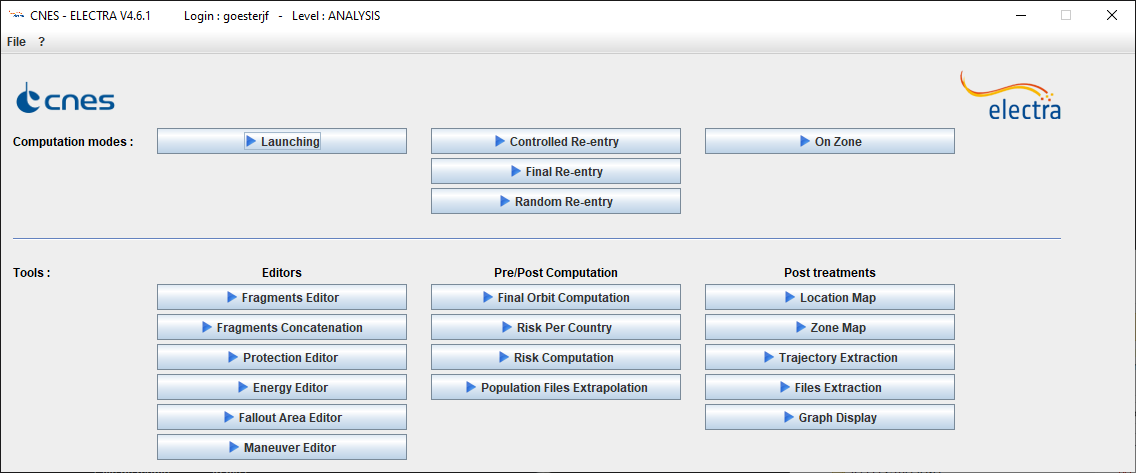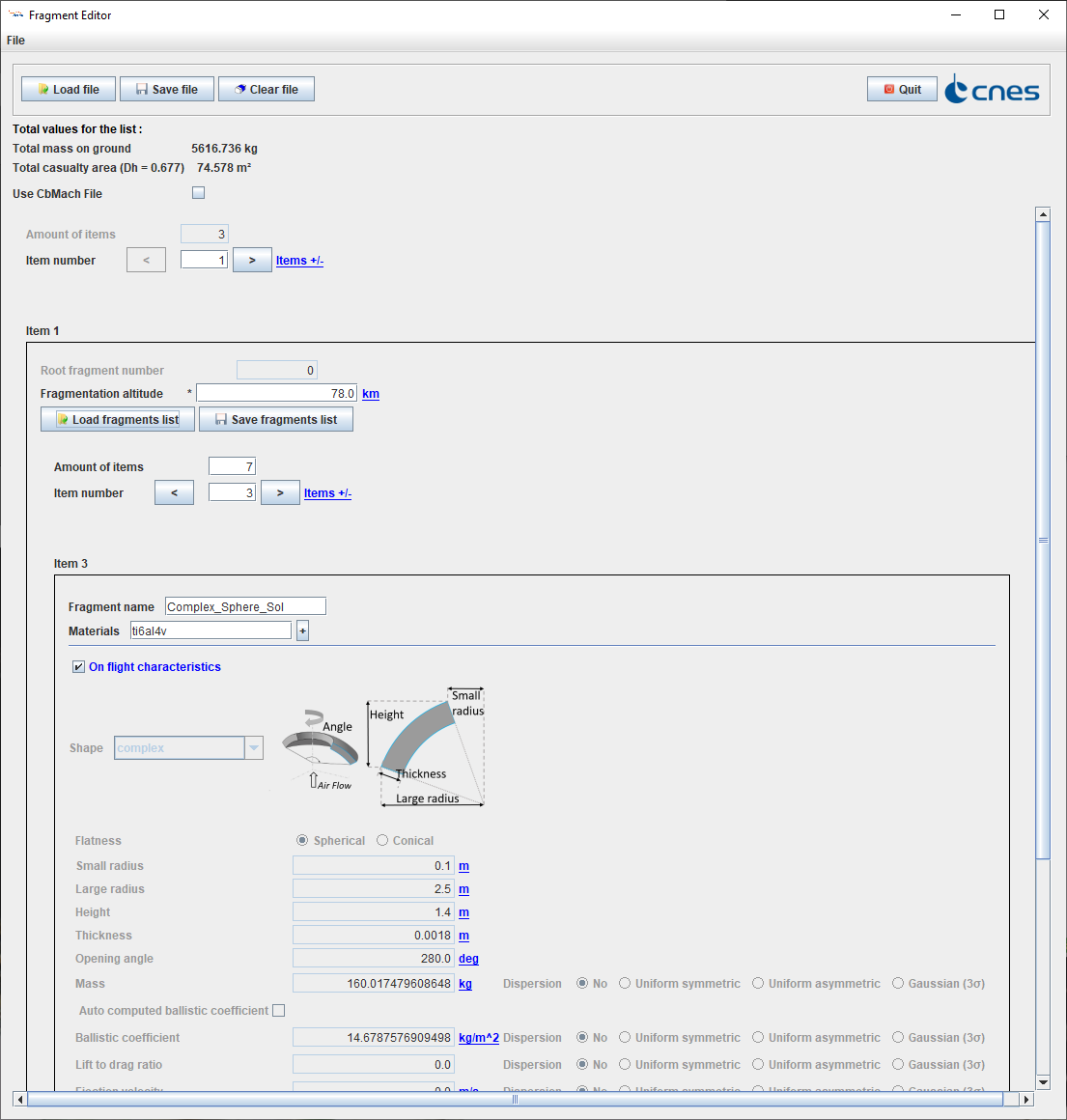
ELECTRA
The CNES reference tool for risk computation due to re-entries!
ELECTRA software has been designed by CNES (The French Space Agency) to support the French Space Operations Act. ELECTRA computes the risk of making a victim due to atmospheric reentries, with or without taking into account protection coefficients. The software and its use are based on the ELECTRA method developed by CNES.
ELECTRA can compute the risk of making a victim in several contexts:
RA mode: in this case the space object (satellite or launcher part) is not controlled and it is extremely difficult to predict the impacts location. The method considers only the latitudes the object flies over, meaning the risk depends on the inclination of the orbit.
RL mode: this context starts from a launcher trajectory (which is guided by definition) eventually dispersed. The method computes the risk due to failures occurring during this launching phase.
RC mode: this context deals with controlled trajectories following deorbit maneuvers and evaluates the risk associated with maneuver failures.
RF mode: in this case, we consider uncontrolled re-entries but only some days before the final fallout. It is then possible to compute the risk more precisely than in RA mode. This mode is only available since the V4.1 version.
RZ mode: in this case, we will compute a risk based on a pre-computed fall-out debris area with the possibility to include “risky” zones such as oil platforms. This mode is only available since the V4.4.1 version but still under its final validation process. Therefore, it is not yet available.
Except for RA and RZ modes, numerical propagations are used with Monte Carlo method leading to relatively important CPU time (depending of the amount of required simulations).
ELECTRA is developed in Java and is provided as a full executable tool with its own GUI.

ELECTRA
Thematic
Licence type
Free owner licence
Programming language
Java ≥ 1.8
Operating system
Windows, Linux







